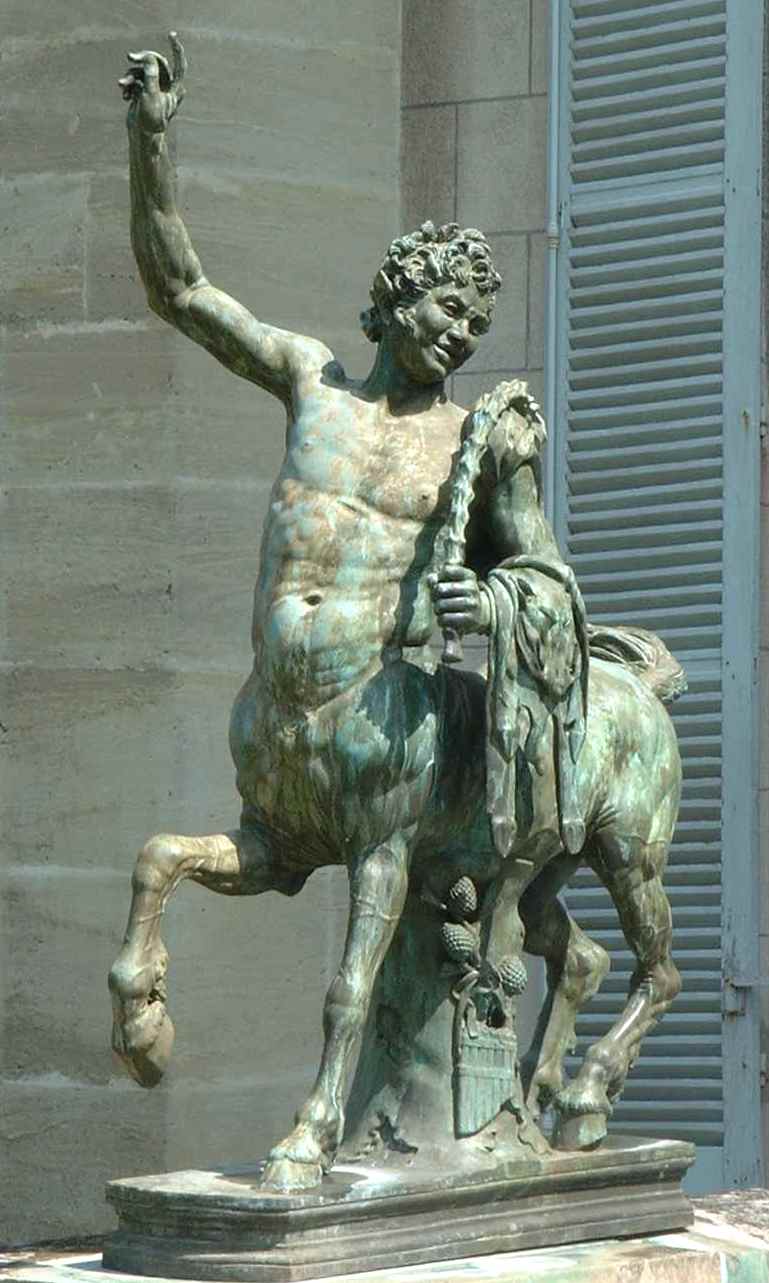Centaurs are a hybrid creature, a mix of human and equine anatomy. Early depictions of centaurs showed man-like forms with the hind quarters of a horse attached at the waste of the man. It’s no wonder that in later images, and in the most common modern view, this original form migrated to the body of a horse with a man’s torso attached at the equine withers, where the horse’s neck should be. This forms, from the front, a man-like image with the horse’s lower body representing what would be normal human legs.
Stories range from poet to poet, but generally, the centaurs began life as decedents of the Greek gods. In one specific variation, Centaurus (the son of Ixion and Nephele - sun and rainclouds) mated with Magnesian mares to produce human/equine offspring while his brother, Lapithus, became the father of the Lapiths race of men.
The most famous story in Greek myth involving centaurs is the war between the half-men and the Lapiths people when the centaurs, on the day of the king’s wedding, made off with their human cousin’s women. The Lapiths would hardly stand by and let this happen, so the two warred with the centaurs losing the battle.
Female centaurs are found first in 4th century BC and are considerably less common than accounts of their male counterparts. Still, they have been found rarely in the poetic record, including Ovid, who mentions a centauress that commits suicide after her husband is killed in the Lapiths war.
 Interestingly, the Lapiths tribe of Thessaly, who were the mythological kinsmen of the centaurs as shown above, was described to be the developer of horse-back riding within the fertile crescent of the Mediterranean. It’s said their horses were the descendents of the original centaurs.
Interestingly, the Lapiths tribe of Thessaly, who were the mythological kinsmen of the centaurs as shown above, was described to be the developer of horse-back riding within the fertile crescent of the Mediterranean. It’s said their horses were the descendents of the original centaurs.In many stories, centaurs represent the untamed, wild spirit of man and animal unified into a single natural force. Sometimes, they are wise and teach mankind - such as Chiron, the great tutor of heroes such as Achilles, Jason, and Heracles. Other times they are bloodthirsty and crave battle, as in the account of the Lapiths war. They are sometimes seen as a metaphor of the struggle between the carnal mature of men against civilization.
One thing is certain. The centaur is a well known mythological creature in modern times. Not a fantasy reader alive doesn’t have an already slanted view of what this being looks like, from Harry Potter 
 to Spell for Chameleon
to Spell for Chameleon .
.


Centaurs will play a role in the novel I'm currently writing, so this post really caught my attention. Interesting stuff.
ReplyDeleteI only recounted centaurian stories from Greek myth, but if you dig a bit deeper, you'll also find stories in India and parts of China, which help support the origination theories.
ReplyDeleteI find it fascinating how different cultures have interpreted mythical creatures like the centaur.
ReplyDelete